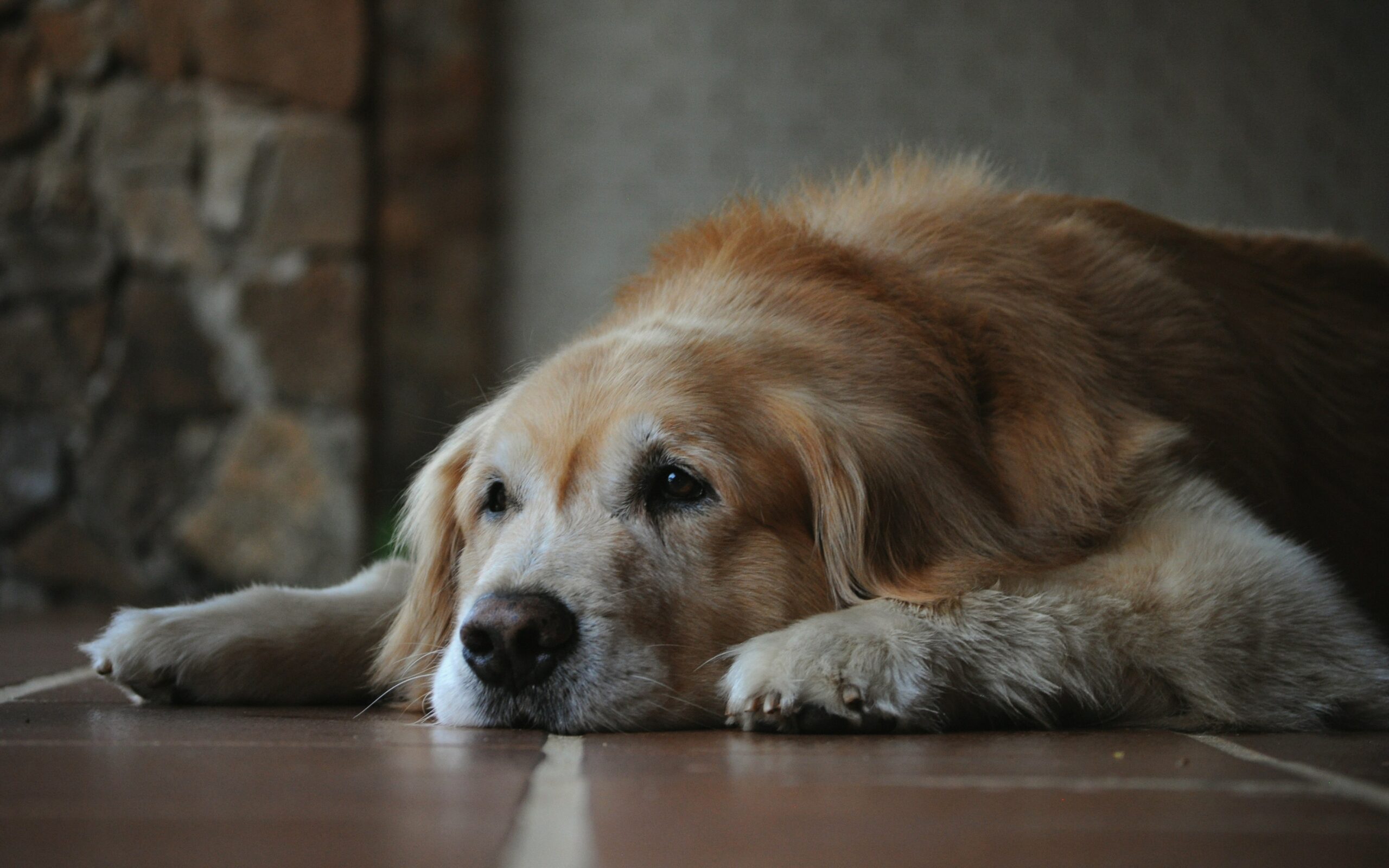It’s a privilege and a responsibility to watch our cherished pets age. Our furry friends require extra care and adjustments to their daily routines as they reach their golden years, much like humans change our care practices as we age. Knowing the special requirements of elderly dogs and cats may greatly enhance their quality of life and help them age gracefully, regardless of whether you are a first-time pet parent or have been on this trip before.
It takes time to go from an adult pet to a senior pet. It’s a slow process that calls for proactive care modifications, patience, and observation. The key components of caring for elderly pets will be covered in this extensive guide, from identifying the symptoms of aging to putting into practice useful care techniques that can significantly improve your senior pet’s comfort and pleasure.
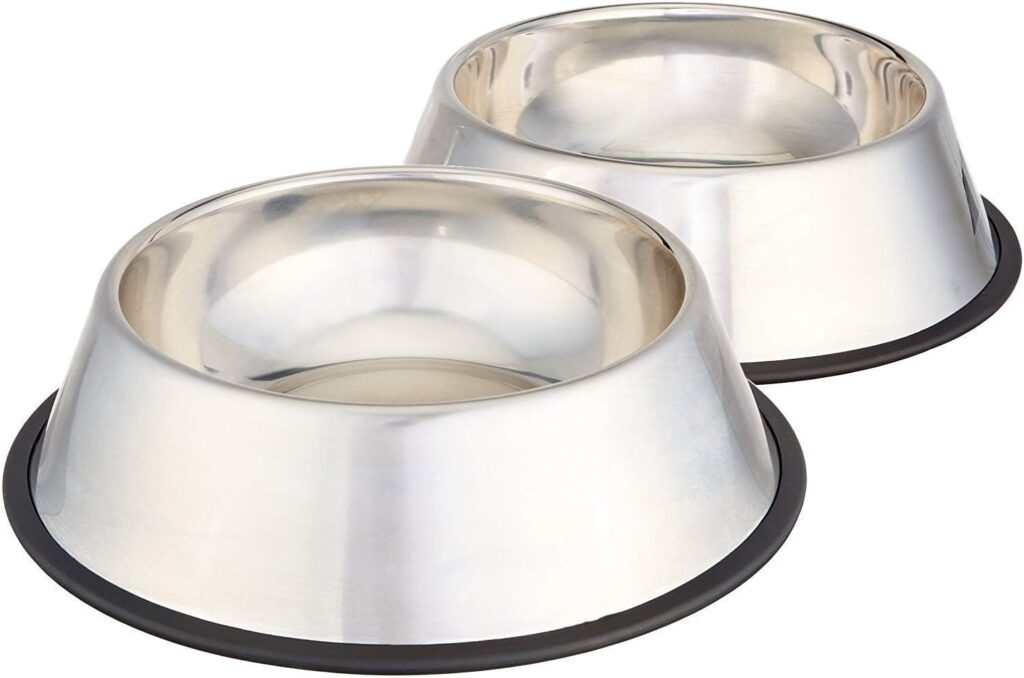
Amazon Basics Stainless Steel Non-Skid Pet Dog Water And Food Bowl
Understanding When Your Pet Becomes a Senior
Even within a species, size is a major factor, and the term “senior” differs greatly between dogs and cats. Dogs’ senior status is largely determined by their size, although cats are typically regarded as seniors between the ages of 7 and 10. Large dog breeds can attain senior status as early as age 6–8, medium breeds around age 8–10, and small breeds around age 10–12.
But chronological age is only one of several factors. Due to lifestyle choices, genetics, or underlying medical concerns, some pets age more quickly than others, while others continue to be active well into their teens. Understanding the tiny changes that signify your pet is approaching old age is crucial.
Recognizing the Signs of Aging in Pets
Senior pets often exhibit a number of behavioral and physical changes that gradually appear over time. Being aware of these signs can help pet owners adjust their care practices and seek veterinary care if necessary.
Decreased mobility, stiffness when awake, reluctance to jump or climb stairs, changes in coat color or texture, weight fluctuations, and irregular sleeping habits are all physical indicators of age. Your cat may be reluctant to jump back to their usual perch, while your once-active dog may take longer to get up from their favorite resting spot.
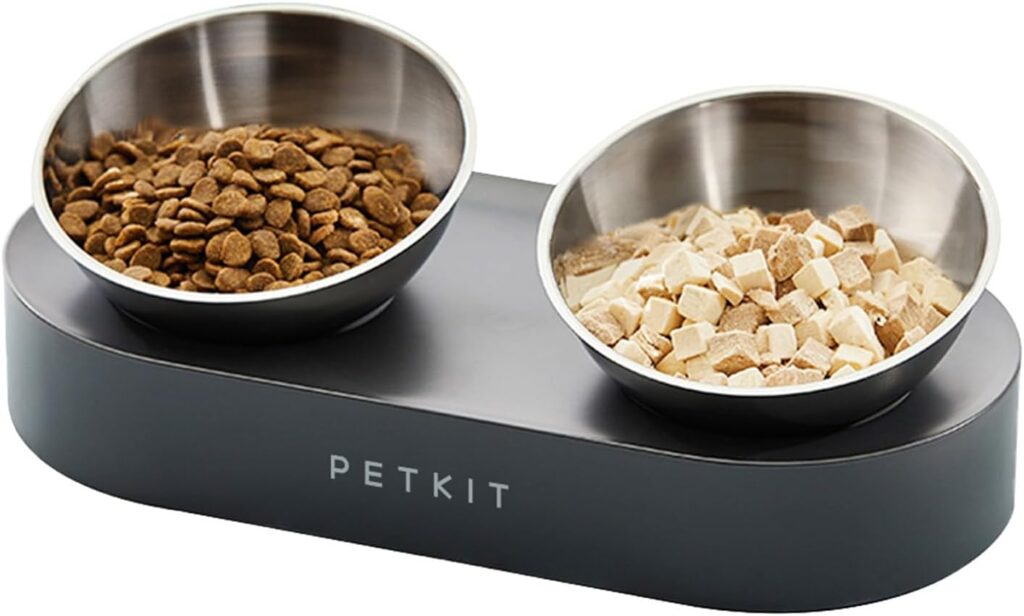
PETKIT Raised Dog Cat Food Bowl 304 Stainless Steel, Elevated Pet Food and Water Bowl Dishes, Elevated Cat Bowls, Non-Slip Tilted Cat Bowl No Spill
Behavior changes are equally important indicators. Pets that are older may change how they eat and drink, become less social, become more nervous in new situations, or become confused or lost. Some pets may grow more needy and turn to their human companions for further comfort, while others may want greater privacy.
Cognitive changes in elderly pets can resemble dementia in humans. Warning indicators for previously well-trained pets include disorientation, unusual sleep-wake cycles, increased vocalization, changed social interactions, and house soiling. These changes do not indicate that your pet’s quality of life is coming to an end; rather, they indicate that their care practices need to be adjusted.
Nutritional Needs for Senior Pets
As pets get older, proper nutrition becomes more and more important. Senior pets may require nutritional modifications due to their altered metabolic rates, decreased activity levels, and evolving digestive capacities. Maintaining an ideal body weight while consuming nutrient-dense, easily digestible foods that support aging organs and systems is the aim.
High-quality, readily digestible proteins, fewer calories if the dog is less active, more fiber for digestive health, and additional supplements like glucosamine for joint support should all be emphasized in senior dog diet. Instead of eating one or two substantial meals a day, many elderly dogs benefit from smaller, more regular meals.
Because cats are obligate carnivores, it is important for senior cats to maintain a sufficient protein diet. However, protein levels might need to be adjusted under veterinary supervision if kidney disease is present. Wet food diets that offer extra moisture, which is crucial for kidney and urinary tract health, are frequently beneficial for senior cats.
Foods enhanced with omega-3 fatty acids for joint health and cognitive function, antioxidants to promote immune system function, and readily digestible carbohydrates for long-lasting energy may be beneficial for both senior dogs and cats. Before making major nutritional changes, always get advice from your veterinarian, particularly if your pet already has health issues.
Exercise and Activity Modifications
Even while elderly pets might not be as energetic as their younger counterparts, daily exercise is still crucial for preserving joint flexibility, muscular tone, and cerebral stimulation. The secret is to modify activities according to your pet’s evolving comfort level and ability.
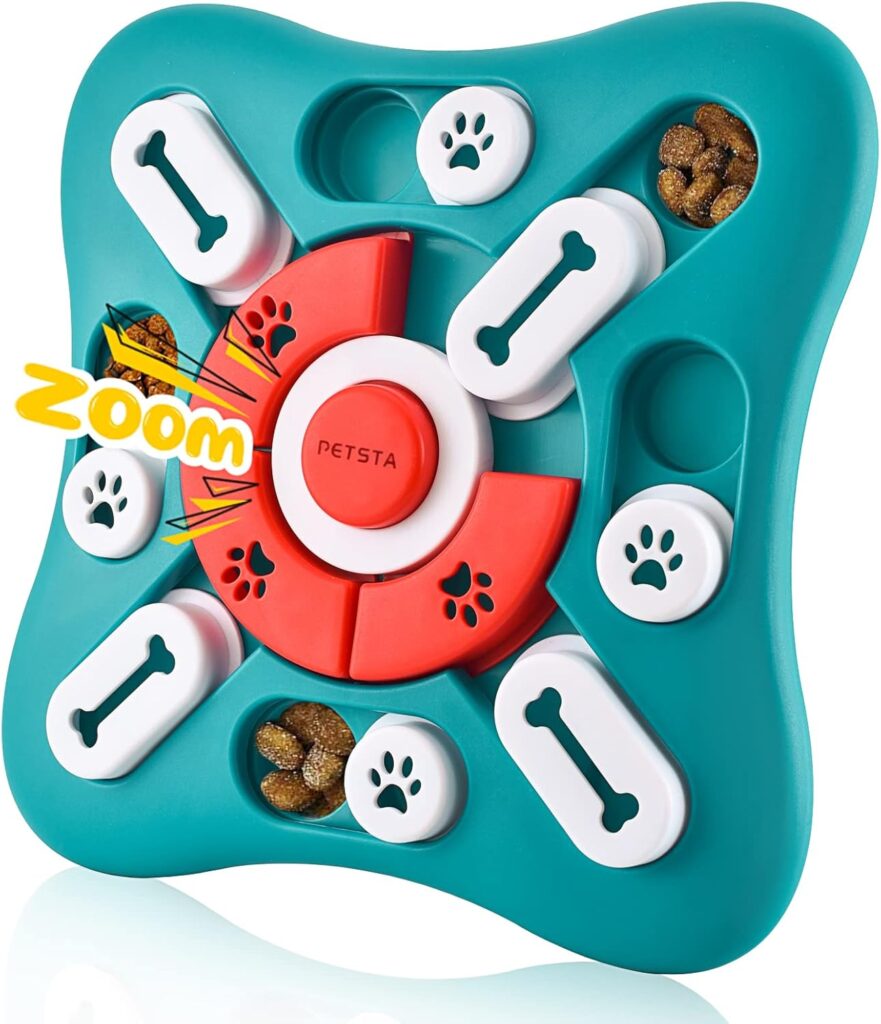
Dog Puzzle Toys – Interactive, Mentally Stimulating Toys for IQ Training & Brain Stimulation – Gift for Puppies, Cats, Dogs
Shorter, more frequent walks are frequently more effective for senior dogs than lengthy trekking excursions. For dogs with joint problems, swimming can be a great low-impact workout that improves cardiovascular health without putting undue strain on arthritic joints. Senior dogs can maintain their cognitive function and engagement through mental stimulation from puzzle toys, training sessions, and novel experiences.
Gentle play sessions that promote movement without being too physically demanding are beneficial for senior cats. Older cats can be encouraged to stay active using feather toys, laser pointers, and toys that contain catnip. Senior cats can continue to enjoy elevated perches without the stress of jumping by creating vertical places with ramps or steps.
It’s crucial to keep an eye on your elderly pet both during and after physical activity. Excessive panting, limping, hesitancy to continue, or prolonged recovery times are indicators of overexertion. Always let your pet lead the way, and give them lots of chances to relax.
Health Monitoring and Veterinary Care
Senior pets make preventive care even more important. For older pets, the frequency of routine veterinary examinations should be increased from yearly to every six months. This enables the early identification and treatment of age-related health problems before they worsen.
Arthritis and joint disorders, dental disease, liver and kidney difficulties, heart problems, diabetes, cancer, and cognitive impairment are common health problems in elderly pets. Early detection of many of these illnesses can lead to appropriate management, greatly enhancing your pet’s quality of life.
Home health monitoring is a valuable addition to veterinarian treatment. Observe how your pet eats and drinks, how they use the restroom, how active they are, and any behavioral or physical changes. Given that weight increase or loss in elderly pets may be a sign of underlying health problems, weight monitoring is very crucial.
Pets need more frequent dental treatment as they become older. Dental disease is frequently painful for pets and can result in major health issues. As advised by your veterinarian, routine brushing, dental care, and expert cleanings can help preserve your pet’s oral health as they age.
Creating a Comfortable Environment
Senior pets’ comfort and quality of life can be greatly enhanced by environmental changes. These adjustments can significantly improve your pet’s everyday comfort and mobility without having to be expensive or dramatic.
Elevated food and water bowls to lessen neck strain, non-slip rugs on smooth surfaces to prevent falls, ramps or steps to aid access favorite locations, and orthopedic bedding to support achy joints are all options for senior dogs. Dogs with deteriorating vision may move securely in the dark with the aid of night lights.
Litter boxes with lower sides for easy access, several litter boxes on different floors of the house, heated beds for arthritic joints, and conveniently located food, water, and resting spots are all beneficial for senior cats. To ensure cats may securely access their preferred elevated perches, think about installing ramps or steps.
Senior pets may have trouble controlling their body temperature, therefore temperature regulation becomes even more crucial for them. In the winter, create cozy, draft-free sleeping quarters; in the summer, create cool, cozy rooms. During the winter, elderly pets could require extra blankets or even heated beds.

New Fi Series 3+ Smart Dog Tracker Collar – AI GPS for Dogs, Health & Behavior Monitor, Virtual Fence, Escape Alerts, Waterproof, Apple Watch Compatible 12Mo Membership Included
Managing Pain and Discomfort
Maintaining an elderly pet’s quality of life requires identifying and treating their suffering. Pet owners must be alert and proactive in resolving possible discomfort because pets frequently conceal pain out of instinct.
Reduced activity, reluctance to move or play, altered posture or gait, increased napping, decreased eating, irritability or aggression, excessive licking or grooming of particular regions, and vocalization while moving or being handled are all subtle signs of discomfort in pets.
There are several different pain treatment alternatives for senior pets that can be customized to meet specific needs. These could include weight management, acupuncture, massage, physical therapy, joint supplements, prescription drugs, and environmental changes. Pets should never be given human painkillers because many of them are hazardous to animals.
Creating a thorough pain management plan in collaboration with your veterinarian is crucial. The needs of your pet should be assessed on a regular basis, and this plan should be modified accordingly. The objective is to strike the ideal balance between actions that offer relief and preserving the highest possible standard of living.
Mental Stimulation and Emotional Well-being
As their physical abilities may decline, senior pets may require even more mental stimulation than physical exercise. Maintaining emotional health and reducing cognitive decline can be achieved by keeping their brains engaged.
Senior pets can benefit from mental challenges like interactive toys, puzzle feeders, and treat-dispensing toys. Even basic training sessions can improve the human-animal interaction and stimulate the mind. Cats can maintain an interesting environment by switching up their toys and adding new textures or fragrances.
Even though their preferences may vary, senior pets still benefit from social interaction. While some elderly pets may prefer calmer, gentler relationships, others may become more gregarious and want more attention. While making sure your pet doesn’t become lonely, respect their evolving social demands.
Senior pets, particularly those undergoing cognitive changes, can feel more secure and at ease when routines are maintained. Consistency in feeding schedules, walks, and other daily routines might help to ease confusion and anxiety.
When to Seek Professional Help
It’s crucial to understand when professional veterinary care is required, even though plenty of aspects of senior pet care can be handled at home. Any sudden changes in behavior, appetite, or bathroom habits should be addressed right away. Emergency scenarios include breathing difficulties, extreme pain or distress, collapse or loss of consciousness, inability to urinate or defecate, and chronic vomiting or diarrhea.
It’s important to discuss your senior pet’s evolving needs with your veterinarian on a regular basis. Never be afraid to inquire about behavioral changes, new symptoms, or worries regarding your pet’s comfort and well-being. Numerous doctors provide senior pet health programs that involve routine checkups and preventative care tailored to the needs of elderly animals.
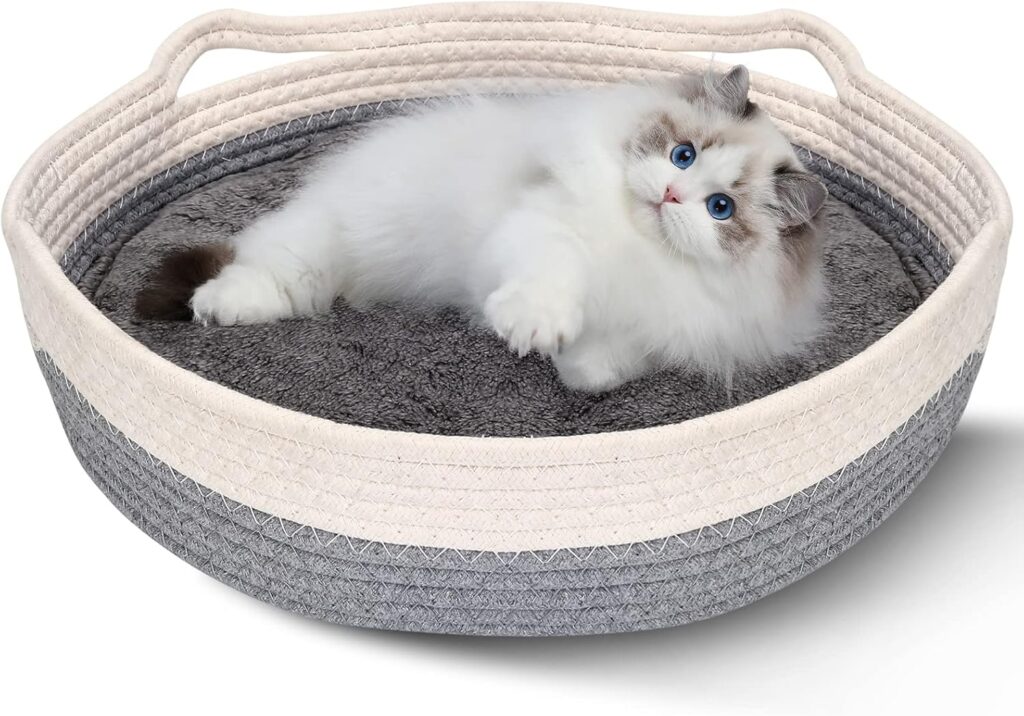
Yummy Sam Cotton Rope Woven Cat Bed Basket, Small Dogs Sofa Bed with Double Sided Mat for All Seasons, 14″x14″x4″ Washable Round Sleeping House…
Conclusion
Keep in mind that many pets have happy, comfortable senior years with the right care, and that aging is a normal process. You may assist your senior pet live a dignified and comfortable life into old age by giving them the right food, moderate exercise, frequent veterinary care, environmental adjustments, and lots of love and care.
Since each senior pet is different, what suits one might not suit another. Maintain regular contact with your veterinarian, follow your instincts as a pet owner, and don’t be scared to experiment to see what suits your particular pet the best. We learn tolerance, adaptability, and the deep connection we have with our animal friends from the experience of caring for an elderly pet. Even though it is unavoidable to say goodbye, the time spent making sure they are comfortable and happy in their later years is a gift to both the pet and the owner, preserving memories and paying tribute to the unwavering love they have given throughout their life.

